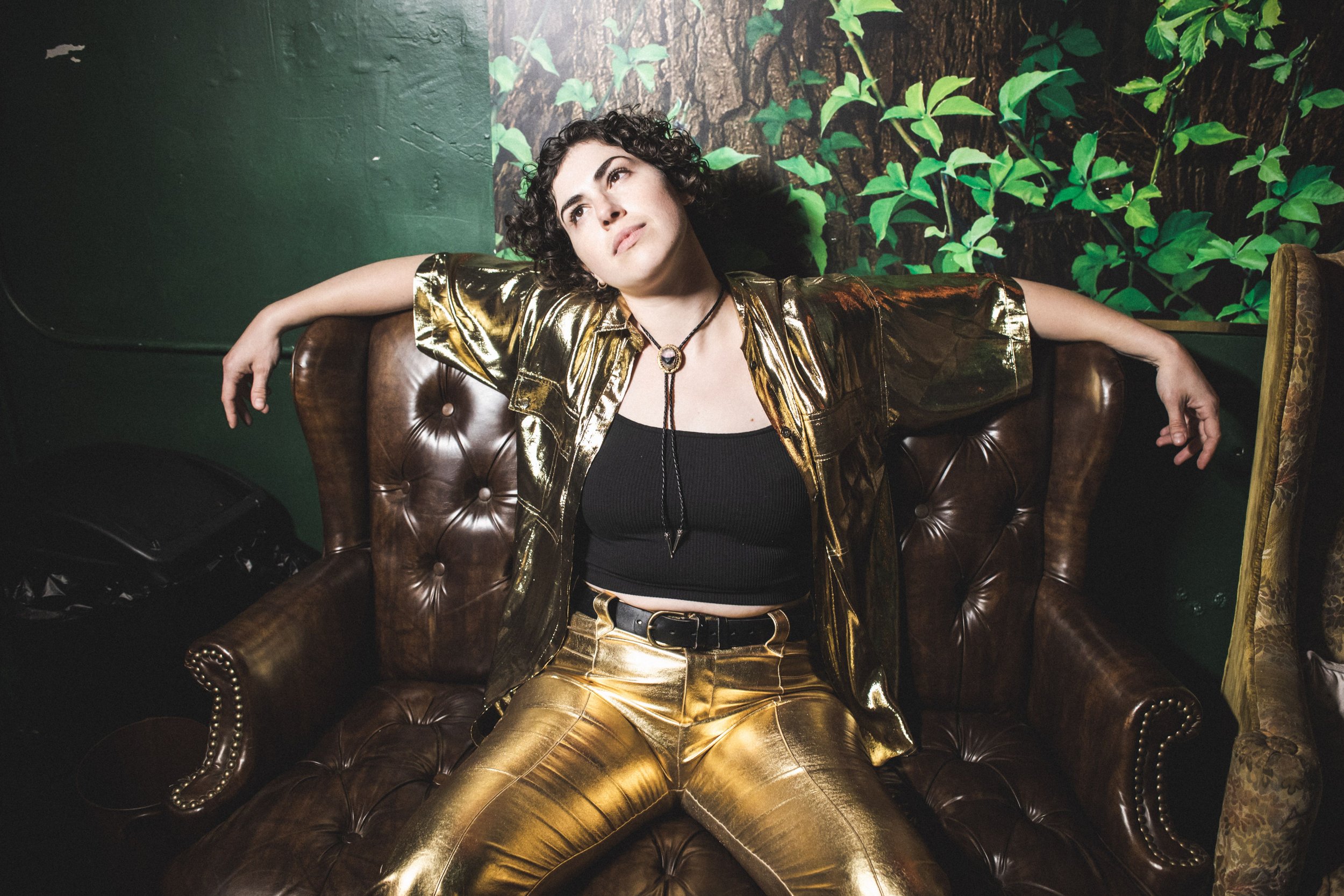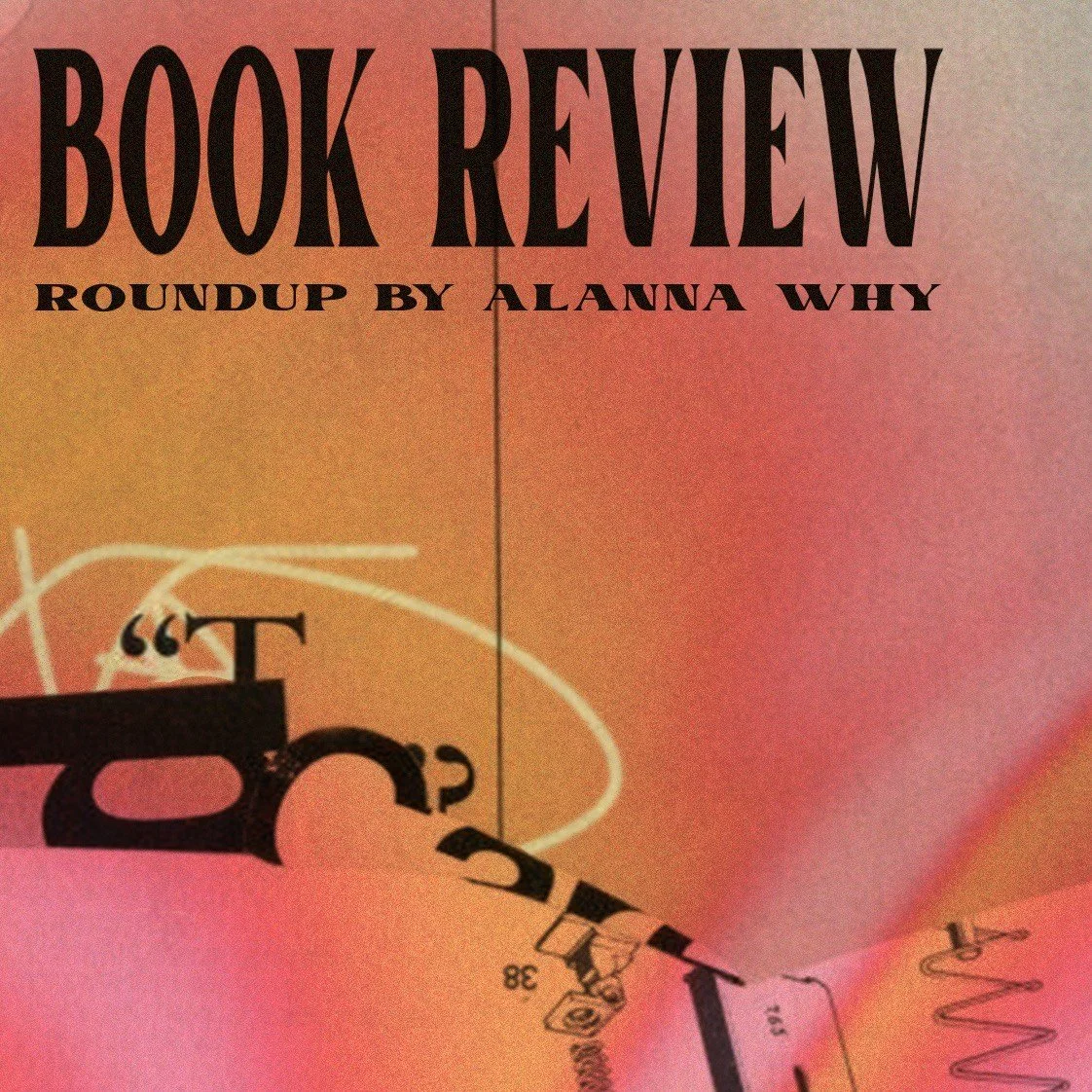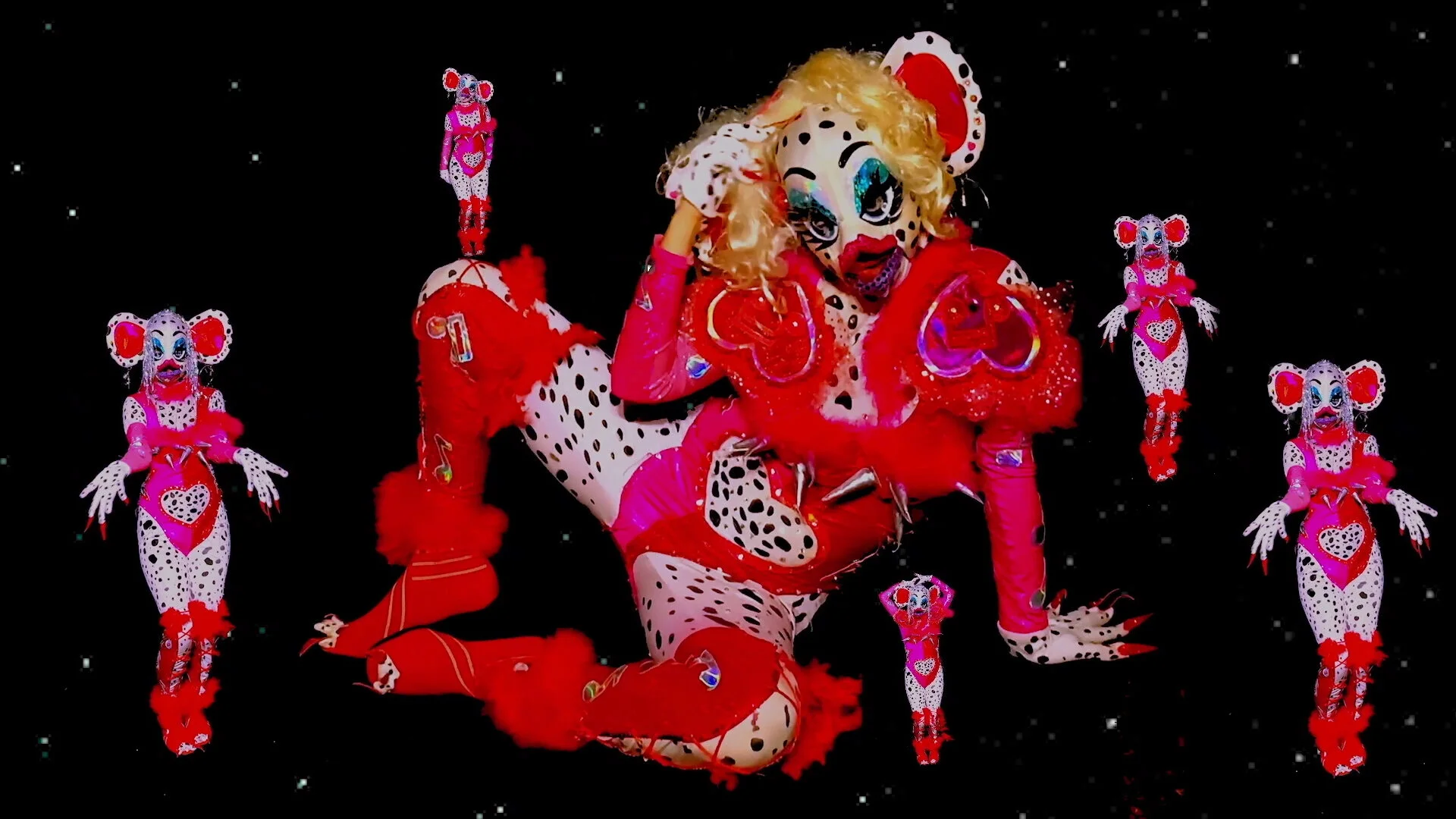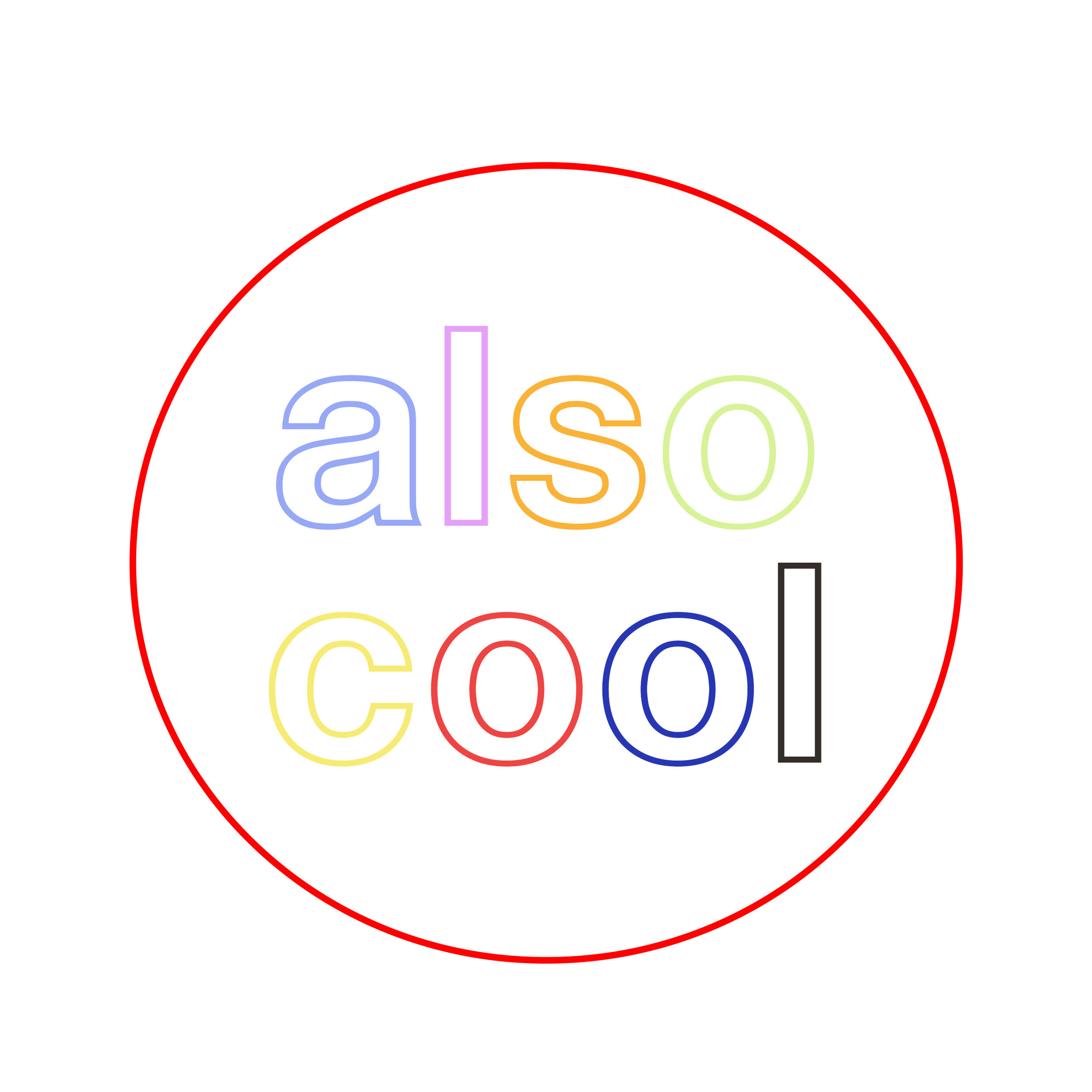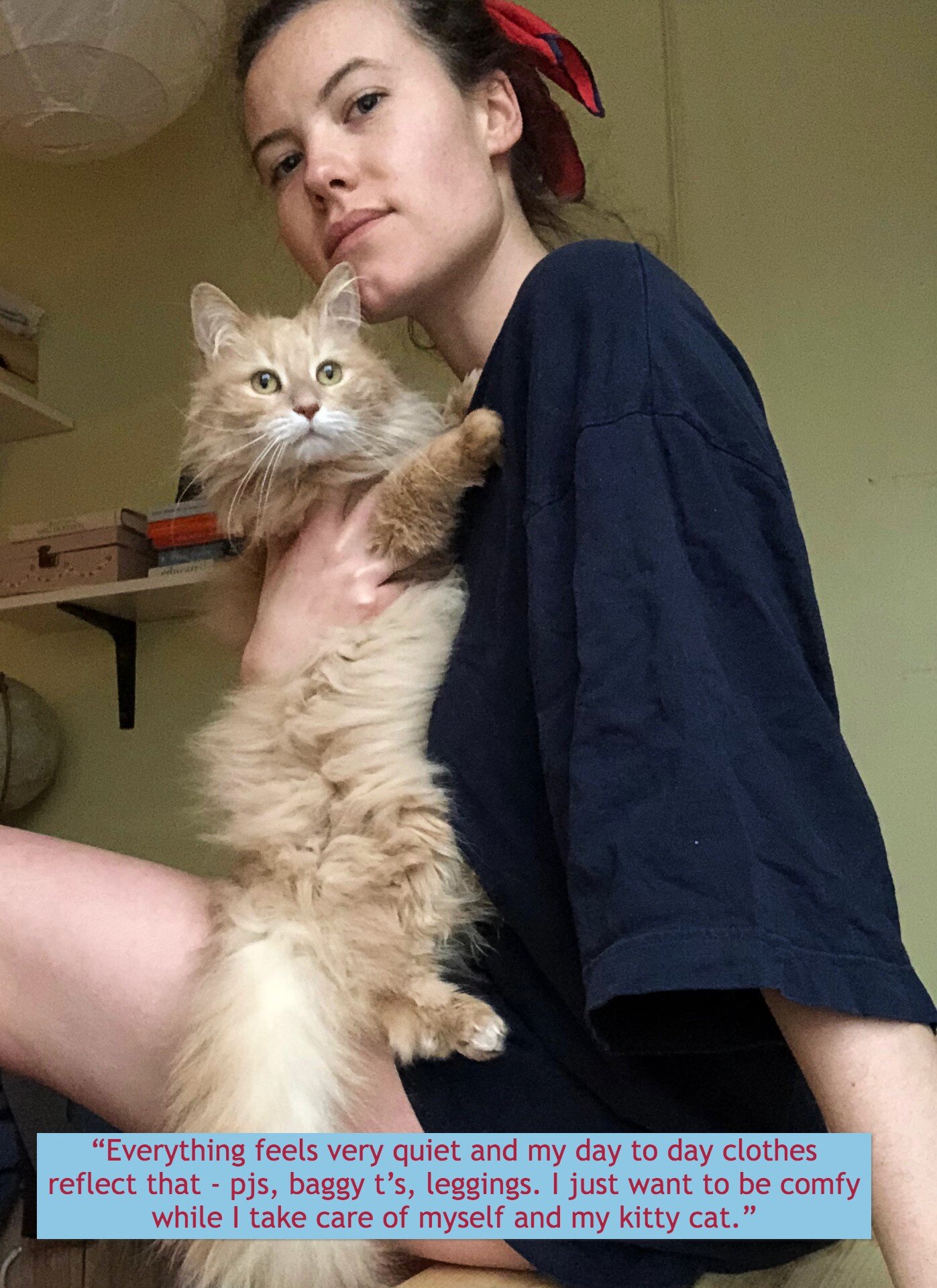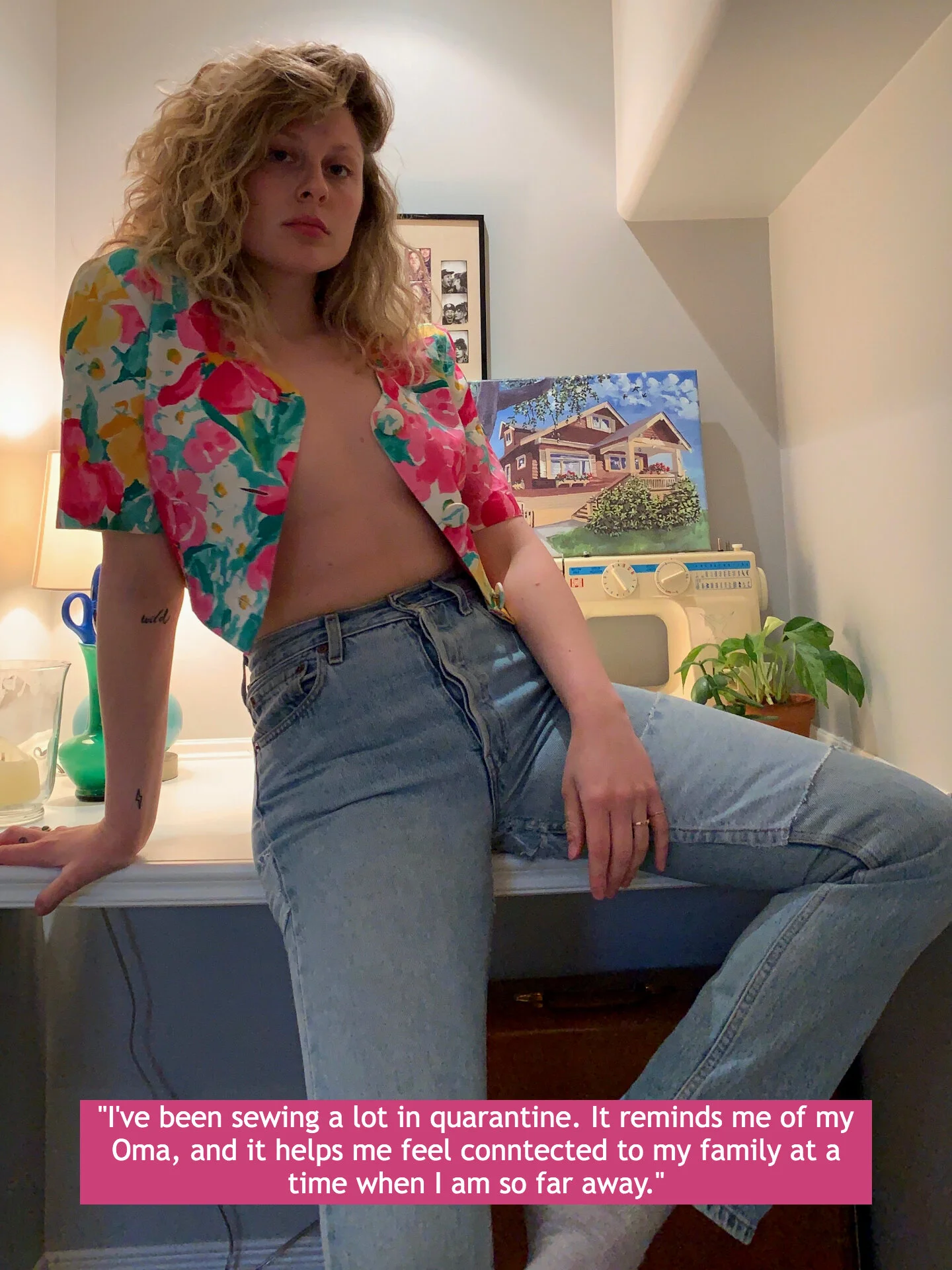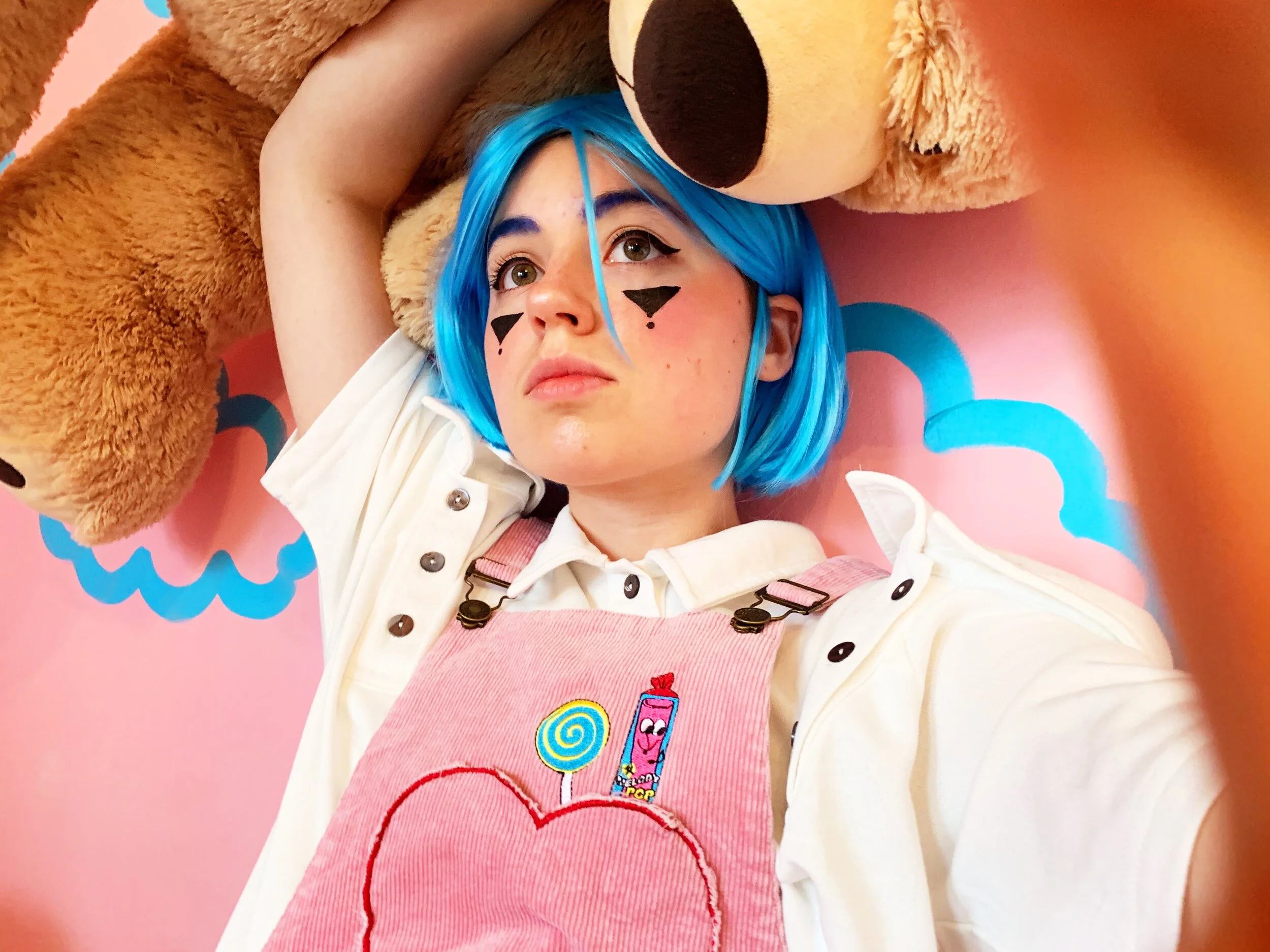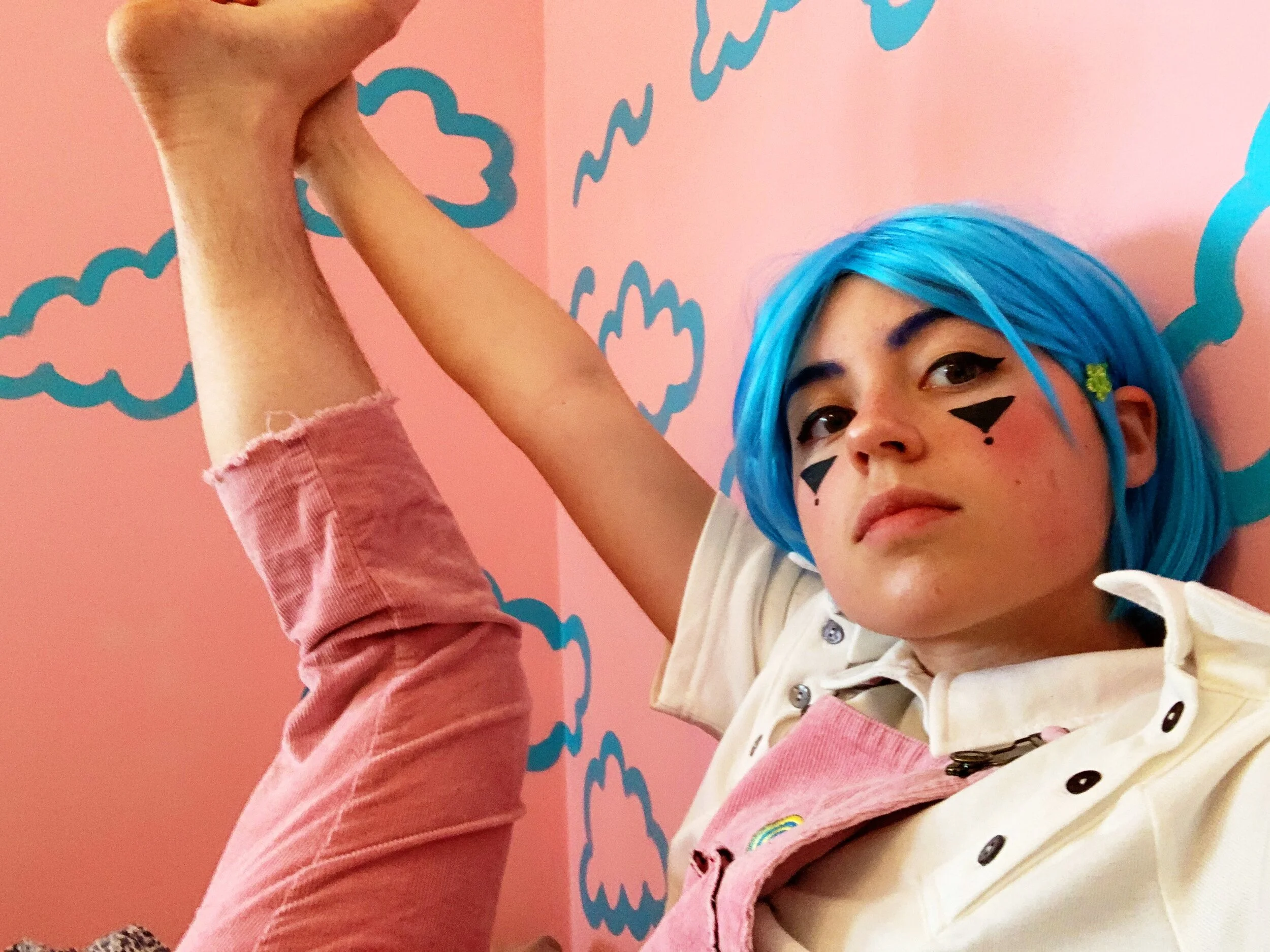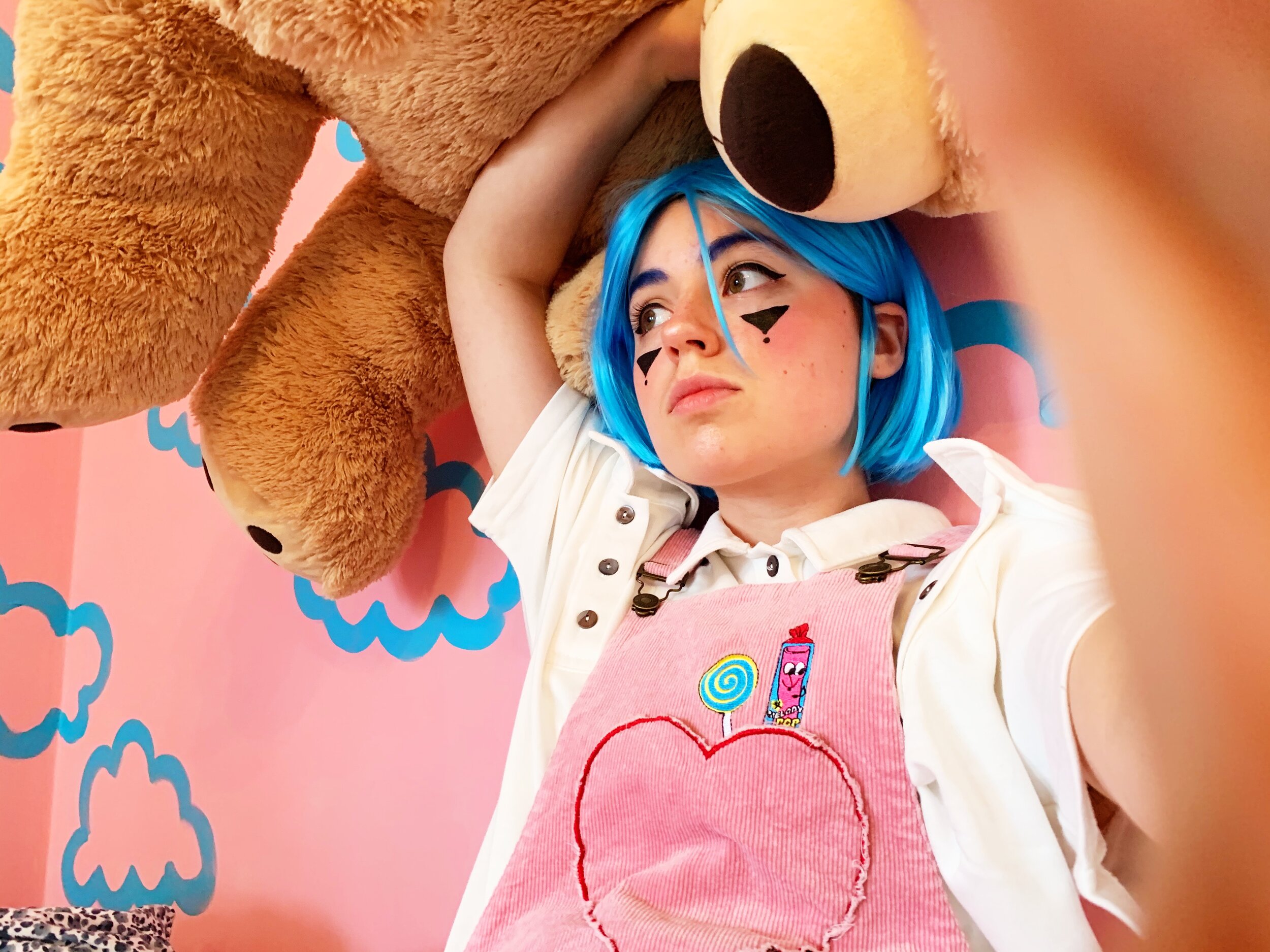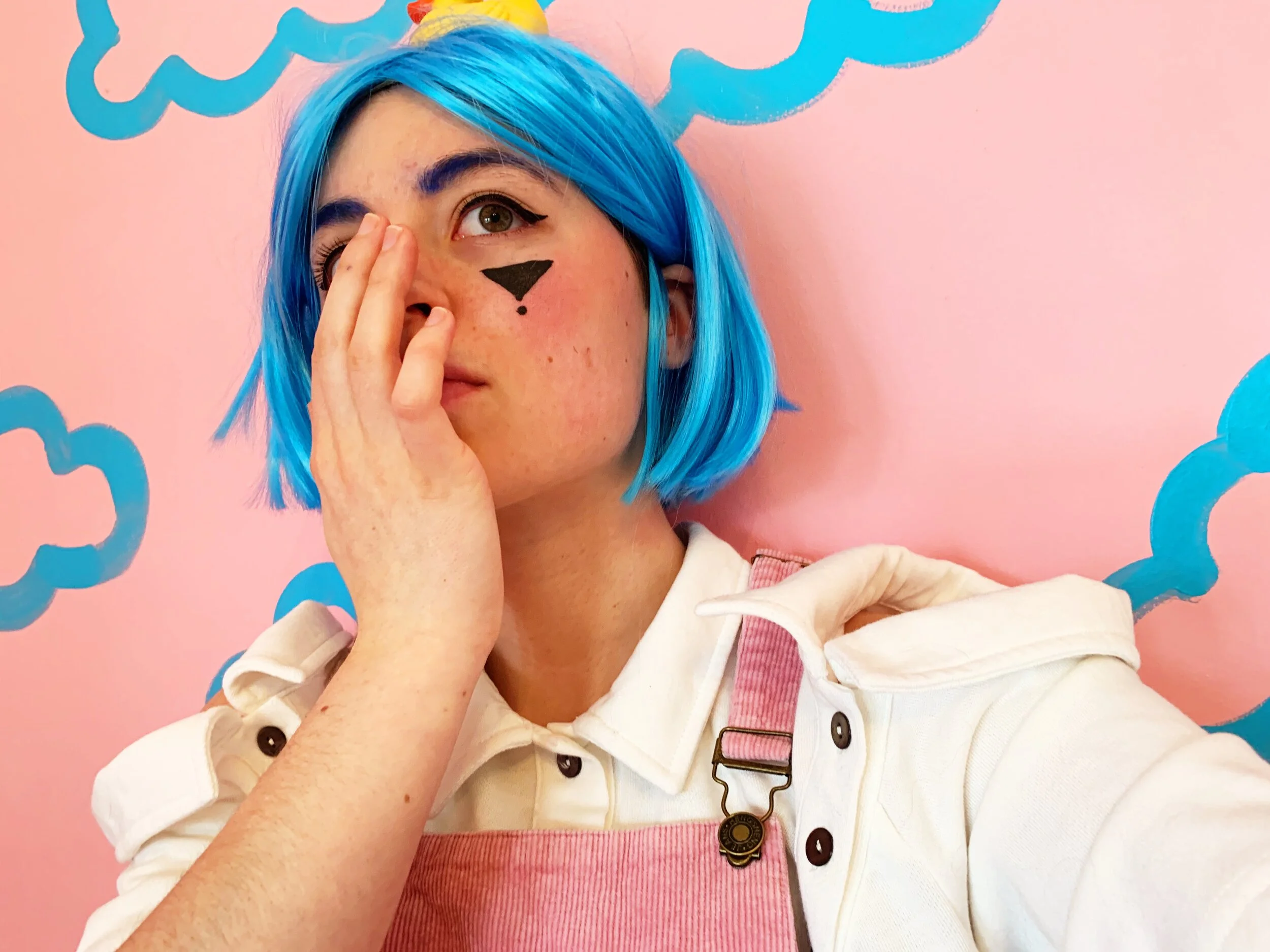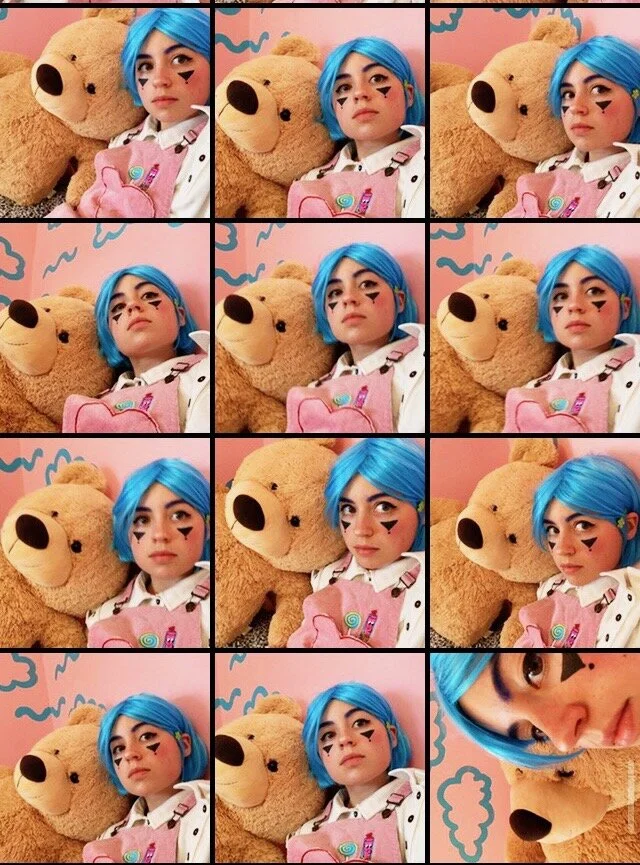Sourdough for the Soul: Glutenmolly on Coping Through Cooking and Awakening Your Inner-Chef
Molly Stead (glutenmolly) with her 30% spelt sourdough boule, photo provided by the interviewee
At one point during the pandemic, it’s likely that your Instagram feed was filled with mutuals cheffing up something. Whether it be banana bread or sourdough, it’s without a doubt that younger people have turned to cooking and baking to kill time in the era of COVID-19. However, to longtime home cook and baker Molly Stead (AKA glutenmolly), there is more to the rise (pun intended) in bread making than it being a simple time-filler; it’s therapeutic.
Other than her sentimental approach to cooking, Stead is setting herself apart as a Gen-Z head-chef in many ways. From crafting Vancouver-exclusive holiday recipes for her experimental cookie biz, to promoting cooking from a resourceful, accessible and anti-diet culture stance, Stead has found a way to make her passion wholly her own, and share it with her online following.
We had the chance to connect with Stead to chat about her relationship with the culinary arts and how she is breaking conventions surrounding the world of foodie Instagram. Check out our full conversation below!
Zoë Argiropulos-Hunter for Also Cool: Hi Molly! Thank you so much for collaborating with Also Cool. To start, can you tell our readers a little bit about yourself and where your passion for cooking began?
Molly Stead: I’m a home cook and baker currently based out of Ottawa. I grew up in Vancouver, and cooking was always a big part of my life from a young age. Both my parents, especially my dad, were always experimenting in the kitchen and loved to cook, so I guess my love of cooking started there. I went vegetarian and moved into my first apartment at the same time in 2017, which forced me to learn a lot about cooking and nutrition very quickly. It was that year I started a food account on Instagram as a separate space to record the food related things I was learning about and experimenting with. I’m no longer vegetarian, but I still love to cook and bake, so this account has stuck around!
Labbneh balls coated in zaatar, nigella seeds, sumac, and toasted sesame with Aleppo pepper, by Molly Stead via glutenmolly
Also Cool: Do you have any dishes that are a particular favourite to craft? Or, are there perhaps any that you lean to because of a strong connection or memory associated with it?
Molly Stead: I feel like this answer has become a little unoriginal because of the pandemic, but I adore bread baking and especially baking sourdough bread. I became obsessed with bread baking in my early teens and I would bake multiple loaves a week at that age. I had recently lost a close family member, and in hindsight, bread baking was something I dived into to cope with grief. Despite the circumstances that kick-started this hobby and skill, bread baking has evolved into an extremely grounding and joyful practice. I specifically started baking sourdough the summer of 2019 and almost 100% of my loaves are naturally leavened. This means that no commercial yeast is added, which is something I am very proud of! I love the challenge and care maintaining a sourdough starter requires. It’s sort of like a low maintenance pet.
Sifted red fife flour and whole spelt flour sourdough batard, by Molly Stead via umamimolly
AC: Like you said, there has undoubtedly been a surge in baking during the pandemic; what are your thoughts on this phenomenon as an already avid chef/baker?
MS: The most obvious answer to everyone baking in the pandemic is because we are all stuck at home, but I think there is more to it than just that. Similarly to how I used bread baking as a coping mechanism for dealing with grief in my early teens, I think many people turned to bread baking in the pandemic to cope with grieving the loss of normalcy. It sounds a little corny, but I think there’s some truth to it. Bread is a living process: when you break down the process and look at the science behind it, it can be simplified as creating a healthy and nourishing environment (flour + water + salt + the right temperature) for little microorganisms (sourdough starter aka “wild yeast,” or store bought conventional yeast). You capture the peak moment of this happy little microorganism home by baking it. To be able to create something as impressive and nourishing as a loaf of bread out of just a few ingredients is so rewarding.
AC: In that vein, do you have any advice for people just starting to venture out into the world of cuisine?
MS: I think a lot of cooking is more intuitive than people think. If you’re just starting off, try recreating things from your childhood or playing around with ingredients you know you love. Don’t be afraid to make mistakes and just have fun! Some of the best things I’ve cooked and baked have been the result of mistakes. While fancy gadgets and specialty ingredients can be fun, there really isn’t a need for that and anyone can have fun in the kitchen just using what they’re comfortable with and have access to.
Lemon cake with lemon cream cheese frosting and local strawberries, by Molly Stead via umamimolly
AC: Outside of your independent love of cooking, you're involved with so many related projects! Let's talk about the cooking zine KitchenSink, of which you are an editor and contributor. Can you tell me about how the first issue "Comfort in Times of Change" came to be?
MS: I think something unique about KitchenSink is that it came together super organically, and was intended to be a community-driven project from the start. A couple of months ago, Danielle posted about seeking help for creating a collaborative zine to explore everyday food feelings during the pandemic. Myself, alongside quite a few others, expressed interest in helping, so she created a group chat and we figured everything out from there! We ended up receiving way more submissions than we anticipated, and we were able to publish the vast majority of them in volume one. We accept anything from illustrations, essays, poetry, and photography, as long as it is related to food and the theme. KitchenSink zine really is a labour of love because it was made and organized by a handful of similarly-minded young people who wanted to talk about the realities of food, nostalgia, and obviously comfort as we cooked and baked our way through this turbulent year.
Sourdough discard, acid whey, and cornmeal pancakes with yogurt and homemade blueberry compote, by Molly Stead via glutenmolly
AC: Branching off of that, you've also spearheaded an experimental Instagram cookie business, Kuketista, with your friend Jade. How do you two come up with your incredibly unique recipes?
MS: My friend Jade and I started up Kuketista a few months ago out of a combination of pandemic boredom and a shared love of baking and cooking. Our original year-round cookie is called Zander, and is a miso-rye-sourdough dark chocolate chunk cookie. We both do sourdough baking, so we knew we wanted to incorporate sourdough discard into a cookie because of the amazing flavor and texture it provides to baked goods. We also both prefer cookies that are not overwhelmingly sweet and have a good contrast of flavours and textures, so it made sense to make the year-round cookie a fun chocolate chunk cookie. The miso adds extra umami and fully replaces the salt in the cookie batter, while the rye flour rounds everything out with a punch of earthiness. I can honestly say that Zander is the best chocolate chunk cookie I’ve ever made.
In addition to our year-round cookie, we decided to have changing monthly cookies rather than a larger pre-set menu because we wanted to highlight seasonal ingredients and flavours. Our current monthly cookie for January is affectionately named Rob, and is one of my favorites so far. It’s a toasted oat and whiskey cookie with raspberry jam, white rabbit candy-inspired drizzle, and sliced almonds. It draws inspiration from the Vancouver-based cultural event Gung Haggis Fat Choy. Gung Haggis Fat Choy is a Robbie Burns Day x Lunar New Year celebration that has been one of the main fundraisers for the Asian Canadian Writers’ Workshop (ACWF). Gung Haggis Fat Choy was not able to run this year due to the pandemic, so we are donating a portion of sales from our January cookie to the ACWF. Additionally, if you send us your donation receipt to the ACWF, we’ll share the recipe for our January cookie in exchange!
Kuketista January cookie “Rob,” photo by Molly Stead via umamimolly
AC: Before we let you go, we'd love to know about any other projects you're working on! We know that you have an upcoming Instagram takeover with Doof magazine, which is so exciting!
MS: Yes! I’m really excited to do a Doof takeover later this year. In case you aren’t familiar with them, Doof is a magazine that celebrates everyday eating and cooking. They have different people do Instagram takeovers every week and I have one lined up for late March. They also recently raised enough money for their first print issue. I’m hoping to elaborate more on bread baking and grief in my takeover, draw attention to ongoing food sovereignty and food justice issues, and post a few simple recipes for baked goods using sourdough starter discard.
Other than the Doof takeover, I’m pretty busy developing recipes for Kuketista (our February cookies are going to be so fun!) while also working a full time job. You can keep up with me on Instagram if you’re interested in a lot of sourdough content and the occasional food-related rant and selfie.
Dark chocolate rosemary olive oil cake with miso buttercream, cherry compote and fresh blackberries, photo by Molly Stead via glutenmolly











